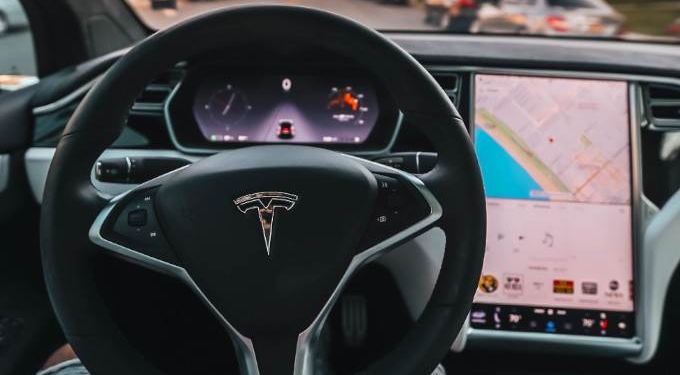
Photo by Roberto Nickson from Pexels
By Jake Anderson | The Mind Unleashed
Elon Musk, easily one of the most audacious business entrepreneurs and tech mavens in modern times, has promised self-driving, autonomous cars for years now. Earlier this year he even went so far as to predict the commercial release of a beta fleet of autonomous vehicles by the end of 2020.
It turns out that prediction may have had a substantial foundation behind it because last week Musk stunned Tesla enthusiasts with a demo of the company’s forthcoming “Full Self-Driving” (FSD) beta. The presentation confirmed a major upgrade to Tesla’s self-driving suite and shocked viewers with a video demo of the beta car’s futuristic dashboard in action.
The test demo featured a specially selected trained driver but the most jaw-dropping aspect undoubtedly involves the dashboard that represents what the car’s neural network is “seeing” as it drives. Multiple glowing modules and real-time data monitors depict a full spectrum of the road ahead, highlighting pedestrian movements, parked cars, and unmarked lane dividers.
Musk himself calls the upgrade a “quantum leap” in the autonomous vehicles race and his Tesla ‘bros’ seem to be just as sold.
One driver featured in the video commented on the car’s first turn, “It paused to look, dude!”
Later in the demo, that driver expanded on the almost creepy, human-like impulses demonstrated by the vehicle: “I almost felt like I was still driving, because I still looked [before making a turn], and the car felt like it was looking, so that was amazing and truly mind-blowing how it was working.”
The neural net used in the new software allows drivers to engage the Autopilot advanced driver-assist mode on local and non-highway streets. The company released terse warnings about the use of the beta car, saying that it still requires constant human oversight because “it may do the wrong thing at the worse time.”
Experts note the risk of a haphazard release, which could result in drivers performing experimental stunts for YouTube videos. In this vein, The Verge described the whole spectacle with succinct criticism:
“Frankly, this looks terrifying — not because it seems erratic or malfunctioning, but because of the way it will inevitably be misused.”
Ed Niedermeyer, communications director for Partners for Automated Vehicle Education, issued the following statement:
“Public road testing is a serious responsibility and using untrained consumers to validate beta-level software on public roads is dangerous and inconsistent with existing guidance and industry norms. Moreover, it is extremely important to clarify the line between driver assistance and autonomy. Systems requiring human driver oversight are not self-driving and should not be called self-driving.”
In its publicly released warning, Tesla acknowledges these risks and the probability that dangerous rule-breaking and stunts are inevitable. There have already been fatal crashes involving autonomous vehicles and there will likely be more. As a result, the company says the Autopilot feature should only be engaged by attentive drivers who have both hands on the wheel.
Despite these dangers, Musk continues to aim for a 2020 wide release.
“Full Self-Driving is in early limited access Beta and must be used with additional caution,” the company writes. “It may do the wrong thing at the worst time, so you must always keep your hands on the wheel and pay extra attention to the road. Do not become complacent.“
Although many critics are expressing an abundance of caution with regard to Tesla’s beta rollout, it is widely believed by automotive and industry experts that autonomous vehicles will one day dramatically improve traffic, reduce car accident injuries, and could save millions of lives. The industrial automation and robot revolution will also shake up the job market and society as a whole.
So, what’s the verdict from The Mind Unleashed readers? Will you buy a self-driving beta car in the first year of its release or will you wait to see the fatality statistics?
















